What Many Photographers Know But Won’t Talk About Publicly
THE STARTUP MYTH VS. REALITY: Running a Photography Business
Your story is like so many others. Maybe you’re a new mom. You buy a good camera to photography your child(ren). You probably spend $2,000-3,000 on a camera with a kit lens. You take many many photos, some turn out pretty nice. You share your images of your babies on social media, all the aunties and besties oooh and ahhhh over these lovely pictures of your kids. You go to a party, bring your camera, photograph all the children playing: your friends’ and acquaintances’ children and maybe even the hosts’ pets.
Everyone raves.
“You should do this professionally!” they say.
So you do.
And then you realize: OH MY GOSH, that camera was just the beginning.
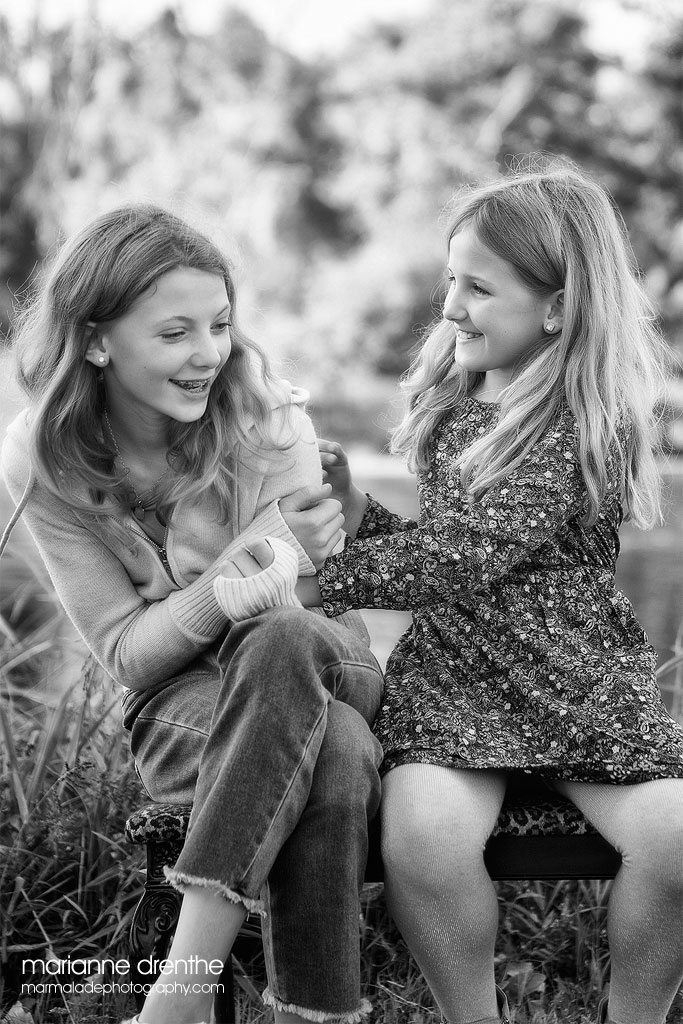
That $2500 camera you thought would last you years? Guess what? Professional photographers often carry two: a main camera and a backup. Missing a shot because your only camera died? That’s not an option when you’re running a business. Batteries? Plan on getting a few “just in case”. Memory storage cards? You’ll need more than you think.
And the lenses…oh the lenses. To be honest? The different lenses and the optics you can achieve are enticing. One of those good lenses for portrait work runs $900-$2,500. And you’ll find that you need multiple. Different focal lengths for different situations. Different apertures for different lighting conditions. You’re not buying one lens. You’re buying a system. You’ll want to differentiate from Suzy from Barefeet-All-The-Time Photography because she’s your neighbor and you want your work to be unique. You’re kind of on the right track although the equipment isn’t enough of a differentiator.
Then comes your work computer. Literally the lifeblood of your business. Bad news though: this will likely NOT be a laptop you already own. Best practice is to get yourself A REAL workstation with processing power that can handle massive RAW files and editing software – you’ll also very likely need a good printer (for general business purposes), the memory card readers (you’ll want a fast one), we haven’t even touched upon professional grade monitors and the calibration hardware and software that ensures your colors are spot on and your clients’ skin isn’t tinged orange or green or fuschia. $2,500-$8,000 minimum. AGAIN, your 2018 laptop won’t cut it.
Storage? You need redundant backup systems. Multiple hard drives. Cloud storage. Because losing a client’s images before they place an order or within the year you guarantee availability of images? That’s a business-ending mistake.
Ohhhh and it’s the 2020’s and software subscriptions are here. All the software subscriptions: Adobe Creative Suite. Ordering platforms. Accounting software. CRM systems. Websites. These add up fast—$100-300/month easily. Sure you can make a go with Adobe only but then how are you tracking your clients? Your communications? How are you conducting your ordering sessions? How are you keeping it all organized?
Guess what? All this and we haven’t even touched upon actual business costs: insurance, taxes, vehicle depreciation, marketing, contracts, legal setup.
Pricing Is Your First Business Crisis
You’ve made it past that first hurdle of differentiation and business creation and may you’ve easily spent $10,000-$20,000 getting set up as a “business owner”. Congratulations!!
Now comes the terrifying part: actually charging money.
To tell you the honest truth? THIS is where most photographers completely and utterly sabotage themselves.
The blind leading the blind phenomenon is REAL.
Newer photographers look at what other newer photographers in their area are charging and base their own value around that or even worse: undercut them. “If she’s charging $300 for a session, I’ll charge $250!” Meanwhile, nobody’s actually doing the math on what these sessions actually cost to deliver.
Here’s the thing nobody tells you: that photographer charging $300? She might be broke too. You’re not undercutting a professional. You’re racing another desperate person to the bottom.
TRUTH BOMB: You end up working 15-20 hours per session and making less than minimum wage. Or worse. You’re essentially paying THEM to let you practice on their family.
The financial shock is REAL. Most beginning photographers don’t budget for this startup reality. They think, “I’ll make back my equipment investment in the first year.” Then reality hits. And you are busted up with session after session after session. Sure you’re “busy” but are you creating profit? Are you making money enough to get a sitter, leave the house, get in your car, drive up to an hour (depending on your target market), setting up for your session, doing the front facing client work, driving home and all that back end work that comes with being a photographer?
At $300-400 a pop? You’re not making back anything. You’re going deeper into debt. You’re running a charity that your clients are benefiting from. This is a tale as old as time (at least in the photography digital age). Countless photographers have stumbled into business in this way and found themselves overworked, overstressed, underpaid, unappreciated, burnt out and quit.
This is a recipe for quitting. You’ll either go broke or be out of business in a matter of time.
And honestly? A lot of photographers choose to get out. They post their “closing my business” announcement on their socials, sell their equipment on Facebook Marketplace or Craigslist and just move on. Those photographers didn’t lack “talent” they just weren’t prepared for the reality that photography is a BUSINESS, not a side hustle that pays for itself.
I’ll be honest, decades “in the business” and I’ve seen this story repeated over and over and over again. The truth? There are too many photographers and not enough differentiation. Every photographer jumping in to make extra money doing gig work waters down the market even more. Everyone’s doing the same thing, charging similar prices (or undercharging), and wondering why they can’t book clients. The market is saturated with photographers who treat pricing like a race to the bottom.
The truth: PROFIT is not a dirty word. It’s why you started doing what you’re doing in the first place.
The photographers who ARE thriving? They are far from being the cheapest. They received guidance and understood their value from day one.
The Time Cost Checklist
Want to know where YOU stand?
Here’s a reality check too many avoid: actually tracking the time each session takes.
Not guessing. Not estimating. Actually writing it down.
This Time Cost Checklist was specifically created for this purpose.
Best practice suggestion: use it to track 3-5 sessions and figure out your average # of hours/session.
When tracking your time – include EVERYTHING you do that is client related.
We’re talking: pre-session emails, prep time, drive time, the actual shoot, editing, packaging, follow-up, that random trip to the office supply store for envelopes, the time you spend on the phone with your lab, ALL OF IT.
Be brutally honest with your numbers. You might be shocked at what you discover.
Through the years I have seen that after accounting for their time most photographers come to a sobering reality. They often calculate that they work anywhere from 15-20+ hours per EACH session.
When they do the math? They make around or even less than minimum wage.
Start a business, have expensive start up costs and then find out you could make more moolah flipping burgers at Portillo’s? Stuff of nightmares! Don’t be one of them.
-> Be accountable. ->Download this complimentary-we-get-no-benefit-from-this-form. -> Fill it out. -> Do the math. -> Strategize to price accordingly.
Write me a nice letter of thanks after you figure this out and adjust your pricing. You’re welcome!
Your Circle Won’t Save You
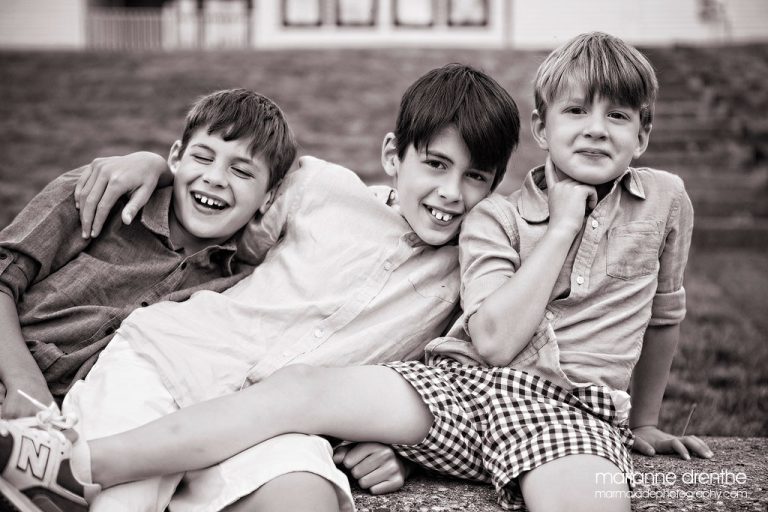
You probably have already experienced this: when you started your photography business everyone had advice. Your mom or your bestie thinks you should charge less “so more people can afford you.” Your sorority sis best friend suggests you offer free sessions to “build your portfolio.” Your neighbor wants a friends-and-family discount. But she wants it forever and by discount she means she wants you to work for near free.
Here’s what nobody in your circle will tell you (nor will they ever admit it): your circle isn’t equipped to advise you on running a photography business.
Sure. They mean well. But think about it – telling you “don’t charge an arm and a leg” is not business advice. It’s their discomfort with you valuing yourself.
The hard truth about your inner circles and you may have already experienced it: people will take advantage if you let them. I’m saying it’s not just your cousin Sally and your Aunt Jamie, I’m talking college besties and high school popular kids that discovered your talent. I’m telling you it’s the random softball team parent that did a quick Google while they were sitting and waiting for their daughter to go up to bat and was curious about what you do for a living. There will be the most random of folks that befriend you only because of your photographer status. Sure they may rave about your pretty pictures and want to get coffee with you but eventually the true motivation pops up and all-of-a-sudden they had a “brilliant idea” and then ask you to bring your camera to shoot “a couple photos” at their kids’ birthday party “real quick” since you’re “already there”. You may even find they then post your images all over social media without credit or copyright respect. And then when you ask them to honor your attribution requests? Suddenly you’re “difficult” or “taking it too seriously” or being some form of “high and mighty”.
You learn fast to be leery of new friends who lead with “I LOVE your work.”
Have you heard of “The Rock Star” Problem?
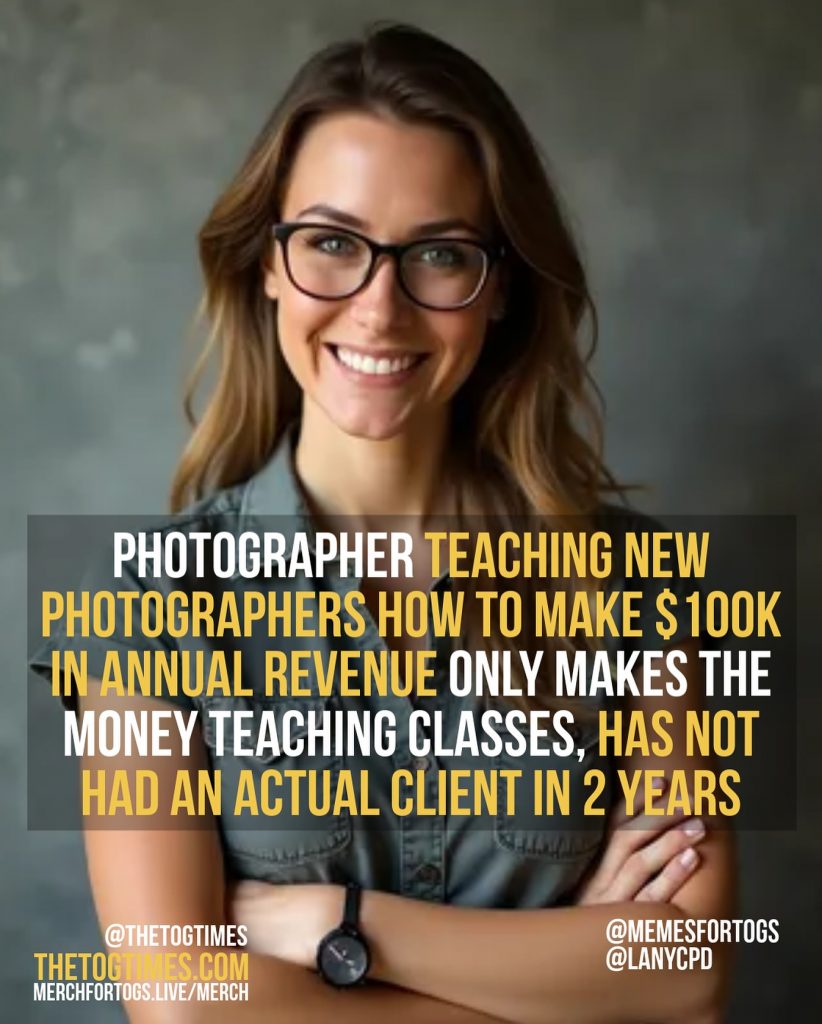
Welcome to the fantastic shiny lights of THE PHOTOGRAPHY INDUSTRY. You will run into these types often enough to warrant the warning I am about to impart on you. There are ROCKS in our industry: solid photographers with clients, pricing themselves appropriately, occasionally providing mentorship and 1:1 and workshop experiences that have the battle scars and stories to show they are who they say they are.
Then there are the photographers who LOOK like they’ve made it. Big Instagram following. Gorgeous feed. Teaching workshops. Posting constantly. They are THE ROCK STARS of photography.
Come in, don’t be shy, let’s take a look closer.
Rock Star photographers often have a business front, but much of their time is spent marketing TO other photographers – not serving actual paying clients (you know, the kind you seek to get in the door to help pay for your son’s travel baseball club). Their portfolio is chock full of gorgeous “model sessions”. What’s a model session? Clearly stylized setups, remarkable clothing, stunning subjects: likely not real paying clients. Not one in their images looks average even before edits. Everything on their site and in their portfolio is perfectly curated, perfectly lit, perfectly unattainable for the average photographer shooting Bob and Janet Jones and their three kids.
And yes: they have solid and probably sometimes excellent work. That’s how they suck you (and your money) in.
You’ll find that they often have a larger-than-life personalities. And drama. Almost always drama.
They’re running mentorship sites, teaching workshops, selling presets, running sales sometimes. But are they actually running a profitable photography business serving real clients? Or are they running a “teach photographers” business?
There’s a difference.
I do want to say one last thing about The Rock Star: if there is a Rock Star mentor that provides a solid editing foundation or a specific genre of work that is going to teach you how to mimic those skills? …As long as you know what you are getting into I don’t think there is anything wrong with consulting them for mentorship. My bigger issue is the Rock Star that is not forthcoming with their (lack of) business acumen.
Am I calling out some people in this (pretty awesome) industry as liars? Well…if I walk like a duck and quack like a duck………
Do You Wonder What Real Mentor Photographers Look Like?
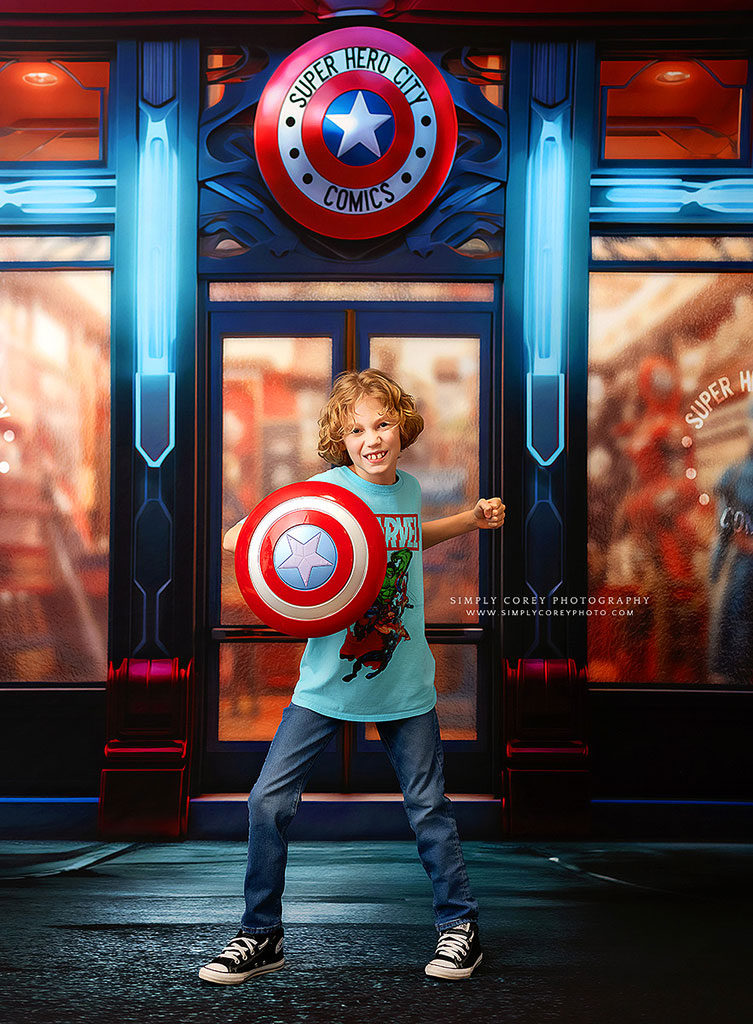
Real talk about real mentors, the ROCKS of the photography industry and there are plenty of them but usually far less shiny and usually quite a bit less dramatic. A real mentor will have a portfolio that appeals to the newer photographer/wannabe student, sure. This portfolio will be full of REAL paying clientele. Average-looking families (cue in Bob and Janet Jones and their three rugrats). You’ll see everyday people in those portfolio images, people you’d run into at the local park walking their Fido but maybe just in dressier clothes.
Not just models in fields at golden hou
A real mentor still has an actual website dedicated to their CLIENTS, not just other photographers with all the shiny happy beautiful people in the images. Their social media shows session peeks, real conversations, behind-the-scenes of actual client work, client celebrations, everyday chat that isn’t geared to elicit ca$h from photographers.
When you interact with them you will find that they give real-world advice. They talk about stuff like knowing your Cost of Goods Sold (COGS) or the ordering software they use. They may even use terms that might overwhelm you as a new business owner, but they may also take the time to explain those confusing words. They may gatekeep some aspect of their business but as mentors will be pretty open about most things that they advertise they give mentorship advice on.
The ROCKS? They won’t sell you a dream. They give you the reality of being a business owner in a creative industry.
The reason they seem to know their stuff is because they’re actually DOING the thing, not just teaching it.
THE BLIND LEADING THE BLIND (aka Facebook Photography Groups and the like…)
Here’s where it gets dangerous: photography forums, Facebook groups, local photographer meetups…OH MY. Everybody’s trying to help each other. Everyone’s sharing pricing advice, editing tips, business strategies. Some may be vying for the spotlight in these groups to build their own little Rockstar empire…
But (probably) nobody’s profitable. In the business sense that is.
You’ve got broke-y photographers teaching other broke-y photographers how to run a BUSINESS. It’s the (business) blind leading the (business) blind-er. The non-seeing Dodos congregate and share advice and everyone’s walking off a cliff together. Yay! Extinction.
Seriously. The advice probably sounds good. “Charge what you’re worth!” “Invest in education!” “Fake it till you make it!” But nobody’s actually MADE it and if you ask questions about “making it” you’ll eventually uncover what is probably pretty obvious: they’re all just faking it together.
If you want to build a real business, you need guidance from someone who’s built a real business. Not someone who started six months before you did.
…Not your best friend who thinks you’re talented.
…Not the Rock Star with 50k Instagram followers and the a-little-TOO-curated feed.
You need to look for photographers who have been doing mentorship/workshops for years. You probably want someone who’s still booking real clients. Someone who’s survived the industry long enough to know what actually works, all the ups, downs from recessions to pandemics and the feast or famine of it all.
Your circle won’t save you and your photography business. But taking the good advice from the right good mentor can.
ART ≠ BUSINESS (but you’ll need both art and business)
READY FOR YET ANOTHER UNCOMFY TRUTH? Art school won’t teach you this, the right side of your brain is going to scoff and that “passionate photographer” inside you will want you to close this site never-to-return buuuuut:
Being a good photographer doesn’t make you a good business owner.
Repeat that again after me: being a good photographer doesn’t make you a good business owner.
Yes, yes, yes! You have an incredible eye for framing. You pay immense attention to “the little things”. Hell yeah, you can nail focus, composition, light. You can make people cry when they see their images. I’m impressed, very impressed actually because those are great things.
However you can STILL go broke “creating” beautiful images that make moms cry and dads a little bit teary eyed.
Professional photography – the art of it all – is only a fraction of what you’re doing, if I am honest the shooting, editing, presenting parts? Those are maybe 33% of the job. The 67%? Oh that’s all that boring “running a business” stuff.
And most photographers are wildly unprepared for that reality, you know, of “running a business”.
Why “Follow Your Passion” Is Terrible Business Advice (because it really is – I didn’t manifest that fact believe me)
We’ve all heard it. “Do what you love and the money will follow!” “Turn your passion into profit!”
It’s a lie…orrrrr at least, it’s an incomplete statement.
Passion doesn’t pay the bills. Profit does. And profit? Well that requires business thinking not just artistic vision. Left + right brained folks step right up!
You can be the most passionate photographer in the world, but if you don’t understand:
- Cost of Goods Sold
- Profit margins
- Tax structures
- Marketing strategy
- Client retention
- Cash flow management
…you will fail. And the saddest part? It isn’t because you’re not talented. It’s that you’re not treating this “creative endeavor” like a business. You know to make money with? Remember travel baseball is spendy! Those dance costumes don’t pay for themselves. And I love handbags as much as the next girl but no one is handing me any Tom Ford bags for free.
The Side-Gig Epidemic
Here’s what’s made everything worse: the media has spent the last 20+ years promoting photography as an “easy side gig.” Got a camera? Congrats, you’re a photographer! Make extra cash on weekends! Turn your hobby into income! Yay…except there are no accepted industry standards as photography professionals. If you take “pretty pictures” and charge for them? Congrats you are now a PRO.
The truth is that even without these media snippets: the public is ALL TOO AWARE that anyone can buy a camera and call themselves a professional. Heck there are people that charge for camera phone imagery (heck if they’re good more power to them I guess). The unintended side effect: it has driven down the perceived value of photography across the board.
Clients expect cheap prices because they know someone’s cousin’s friend just bought a camera and is charging $200 for a session. Why should they pay YOU more? What makes YOU think YOU’RE better than my cousin Jamie? You must be stuck up charging those prices. Highway robbery! Arms and legs!
This is why positioning matters. This is why business thinking matters.
If you’re treating photography as a side gig – something you do for “easy money” on weekends at rock bottom pricing and not knowing the specifics of running a business – I hate to say it: you’re part of the problem. You’re contributing to the race to the bottom. And you’re not building a sustainable business.
Ask Yourself: Why Am I Doing This?
Be brutally honest with the answer(s).
• Are you doing this for easy money? (Spoiler: it’s not easy, and if you’re underpricing, it’s barely money.)
• Are you doing this because you love photography and think that’s enough? (It’s not.)
• Are you doing this because you want to build a BUSINESS that happens to involve photography? (Now we’re talking.)
• Is this about feeding your Ego – to be told you’re so talented? (Eventually that will not be enough and probably that eventuality will happen sooner vs. later. In other words: LIKES won’t fill bellies or buy expensive sunglasses.)
It’s a left and right brain endeavor. You literally have to think with BOTH sides of your brain and have the mindset that the business feeds the art and the art feeds the business.
The creative side: composition, light, emotion, storytelling.
The business side: pricing, costs, marketing, systems, profit.

One without the other fails.
We all know that super talented with-a-great-eye and passionate photographer that has no business acumen – they will go broke or worse, will get so over-stressed by the demand for their work at low pricing and the resulting high volume work that it will completely kill their love for the art. Don’t believe me I could give you more than ten examples I’ve seen through the years. Wonderfully creative, expression filled and unique photography but with zero head for the business-y side. It was all such a recipe for disaster. R.I.P.
On the other hand the business-savvy person with zero artistic skill produces mediocre work no one really wants to buy. I know a few of those as well.
As I said: you need both. Kind of the photography business Ying and Yang.
Your Business Is Not A Charity (aka: Call It What It Is – A Charitable Passion Project)
Here’s the hard truth: passion projects are wonderful for those that can afford them. Charities are terrific ways of giving back.
GIVING BACK. Meaning you benefit in some way in order to return the favor/act.
But if your business is being run as a “passion project” I assure you…you are not running a business. You run an expensive hobby that occasionally funds itself.
Passion projects should be:
- Any pro bono work you do AFTER you’ve paid yourself
- The creative exploration you fund with your profits
- The portfolio-building you do when your bills are covered
They’re not a viable business model.
If you want to strategize to survive in this (highly competitive and saturated) industry, you have to be a business owner first. Put that business-y hat on now.
…Passion is what fuels you. Profit is what sustains you.
…The art feeds the business? Yes but the business is what makes the art run.
It’s an ouroborus of sorts this business/art interaction in successful photography businesses. I already said Ying and Yang and I guess I just said it again. You cannot have one without the other.
Can you see how deceptive starting a “little” photography business can be? Professional photography is far less easy than it superficially seems. I mean we can teach a monkey to take pictures…literally *anyone* CAN press the button to capture an image. But that doesn’t mean everyone can do it well…and fewer than that will do it profitably.
The advice you fought through this wall of text to receive follows:
1) Price yourself well.
2) Position your brand well.
3) Find an edge in your market.
4) Never ever forget: you are a business owner first.
Position Your Business or Die
Congrats! You’ve made it this far and now you’re seeing the big picture. You understand the costs of start up. You now know pricing can be a crisis. You’re learning your circle won’t save you and those Rock Stars are far-too-often grifting dreams. You fully understand that you will need both business sense AND artistic skill.
Now comes the final hard reality, brace yourselves kids because this is a wild ride: In a saturated market, you either differentiate or you disappear.
The Saturation Problem
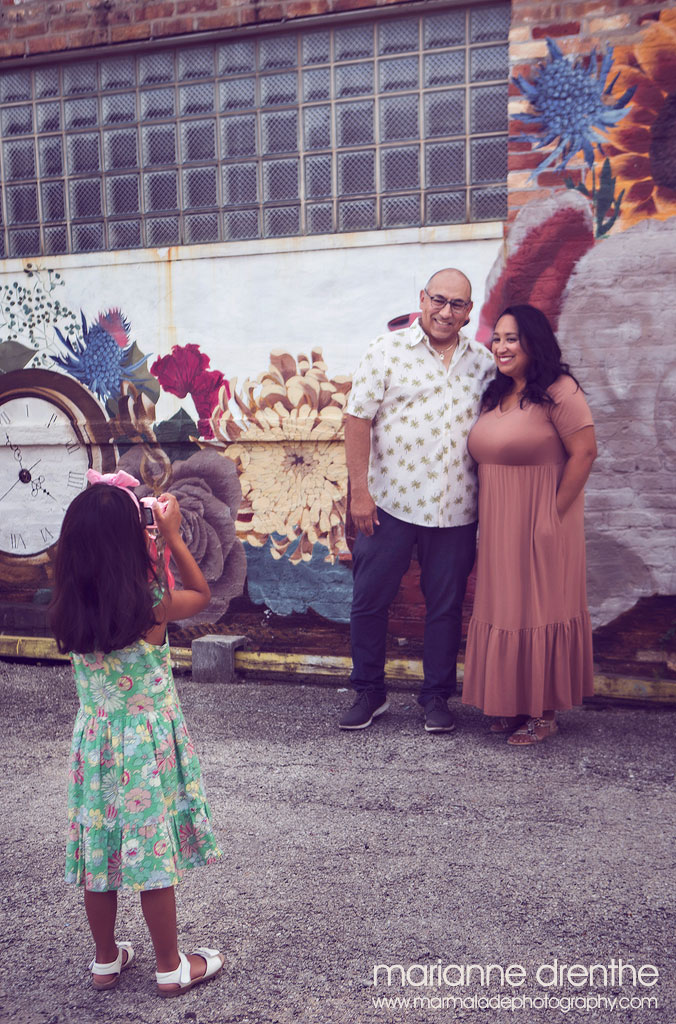
Oof, you did some market research and realize: “OMG there are far too many photographers!” An opinion? Nah…it’s a fact.
- Every mom with a camera (aka MWACs. It’s me, hi! I am/was one!).
- Every college kid with a mirrorless system or dSLR or even the always on trend thrift shop film camera.
- Every side-hustler charging $200 for “100 edited images” from a mini-session.
They’re all your competition now – for better or worse. Whether you like it or not. The photography market is flooded. Clients have endless options.
Don’t believe me? Go to your local Facebook Group Page dedicated to your town and ask a question, one simple itty bitty question and I bet you can even do it anonymously: “I need a family photographer who won’t charge an arm and a leg for a family session, any recommends?”
9 out of 10 times you’ll get a plethora of responses from several sources: photogs themselves, their family and friends or sometimes “happy clients”. I put that in quotes because sometimes it’s thinly veiled family members or besties doing the bidding.
The worst part? Most of the work being produced by the masses of photographers pimping their wares on unsuspecting Facebook groups often look EXACTLY.THE.SAME.
Orange-y tints. Vintage tints. Golden hour white dresses in fields. Barefoot kids. Flowy dresses. Or maybe it’s ring light. White wall. Beauty Dish. Disco Ball. Guess what? It’s all been done. A thousand times. By a thousand photographers in your area alone.
If you look like everyone else, you’ll be treated like everyone else: replaceable.
Who Said That “Affordable” Is An Edge?
Differentiation is NOT “I’m more affordable!”
That’s not an edge. That’s a death knell for your business.
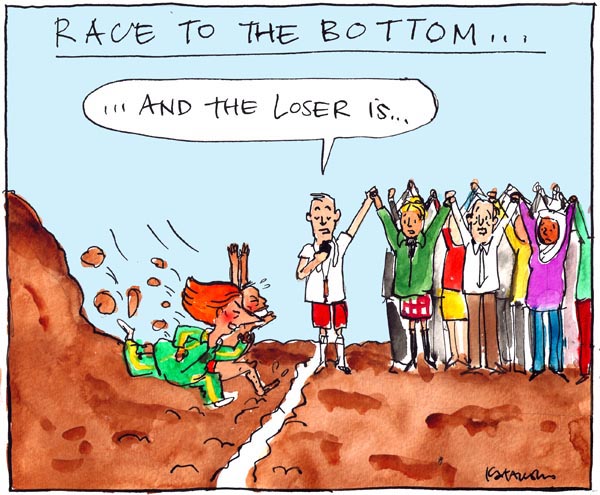
It’s a race to the bottom when you compete on price alone. You’ll be running that race with every other broke-y who doesn’t want to learn/grasp or know their numbers. No matter who wins…you all lose. If you happen to be the “winner” of that race? The prize is being the cheapest with a return on that investment of working yourself into exhaustion for near poverty wages.
“Affordability” is not great nor strategic branding. It’s often a red flag flapping in the wind amongst a whole lot of similarly branded other red flags.
Clients who choose you ONLY because you’re cheap will:
- Demand more for less
- Not value your work
- Haggle and negotiate
- Expect constant discounts
- Leave you for someone cheaper
Is that a client base? Or the stuff of nightmares?
What Differentiation Actually Looks Like

Real positioning in a saturated market in a saturated industry is all about being DIFFERENT. It’s about:
- A specific style that’s recognizably YOURS
- A specific type of client you serve (and serve WELL)
- A specific experience you provide that others don’t
- A specific problem you solve better than anyone else
Maybe your positioned as the newborn photographer who makes nervous first-time parents feel confident and calm and knows all the right things to do and say to make an otherwise stressful and unsettling experience (having someone else manhandle their brand new baby!) pleasant, comfortable and somewhat of a break.
Maybe you’re the family photographer who specializes in blended families and step-siblings who has the uncanny ability to make everyone laugh and forget about their perceived differences for at least an hour or two.
Maybe you’re the photographer who works exclusively with neurodivergent children and knows how to make sessions comfortable for them and gets wonderful eye contact in the images you capture.
Maybe you’re that photographer very well known for moody and super dramatic edits when everyone else is shooting bright and airy.
THOSE THINGS? Those are an edge. THAT’S positioning. That is Branding 101 my friends.
Find Your Edge or Get Lost in the Noise Trying

More questions to ask yourself (in case you aren’t tired of my questioning you and your motivations):
- What do I do differently than every other photographer in my market?
- What type of client do I serve best?
- What problem do I solve that others don’t even see?
- What would someone say about me that they wouldn’t say about anyone else?
If you can’t answer these questions, you don’t have an edge. You’re just another photographer. In saturated markets the “just another photographer” photographers? They don’t survive long term. Sure maybe they’ll swim around in the business waters for a few years but eventually be drowned and lost at sea due to the enormous water pressure of business-y things they refused to grasp at the onset of their business.
Ultimately, your work needs to speak a language that only your intended clients may understand. I promise that you need not be everything to everyone, you can’t be. But you CAN be something to someone who matters – the client who understands the language of your work.
What are the steps that you have to take in order to get clients who understand your language?
• Pricing yourself well.
• Positioning yourself clearly.
• Finding and owning your edge.
It’s this or drown in the sea of orange-y tinted imagery created by “purfessionul” fauxtographers that charge $200 for 100 edited photos that your Aunt Ariel follows religiously.
Your choice.
Found this helpful?
Congrats! You made it to the end of this lengthy article filled with advice do’s/don’ts and maybes. If you have someone or some people to share this with…you’re welcome to use any portion of this site on your blog, website, or social media pages with one caveat!
Please credit any excerpts you use on your site or blog by copying and pasting the following on your site or social media page (with appropriate links enabled):
” This article was written by Marianne Drenthe of Marmalade Photography www.marmaladephotography.com and can be found at the Professional Child Photography site at www.professionalchildphotographer.com “
